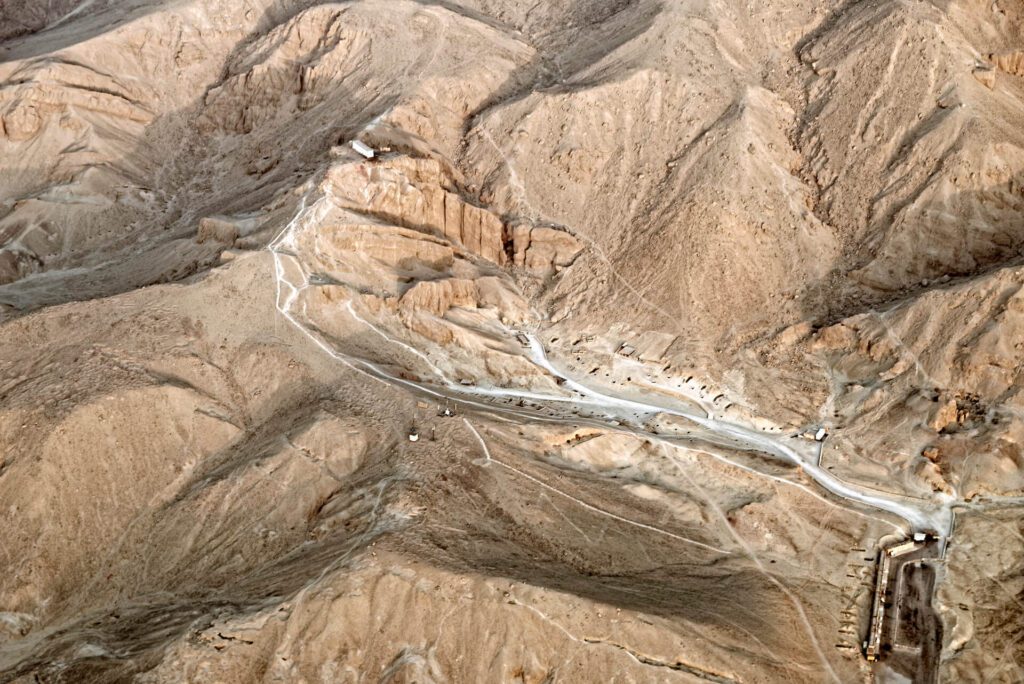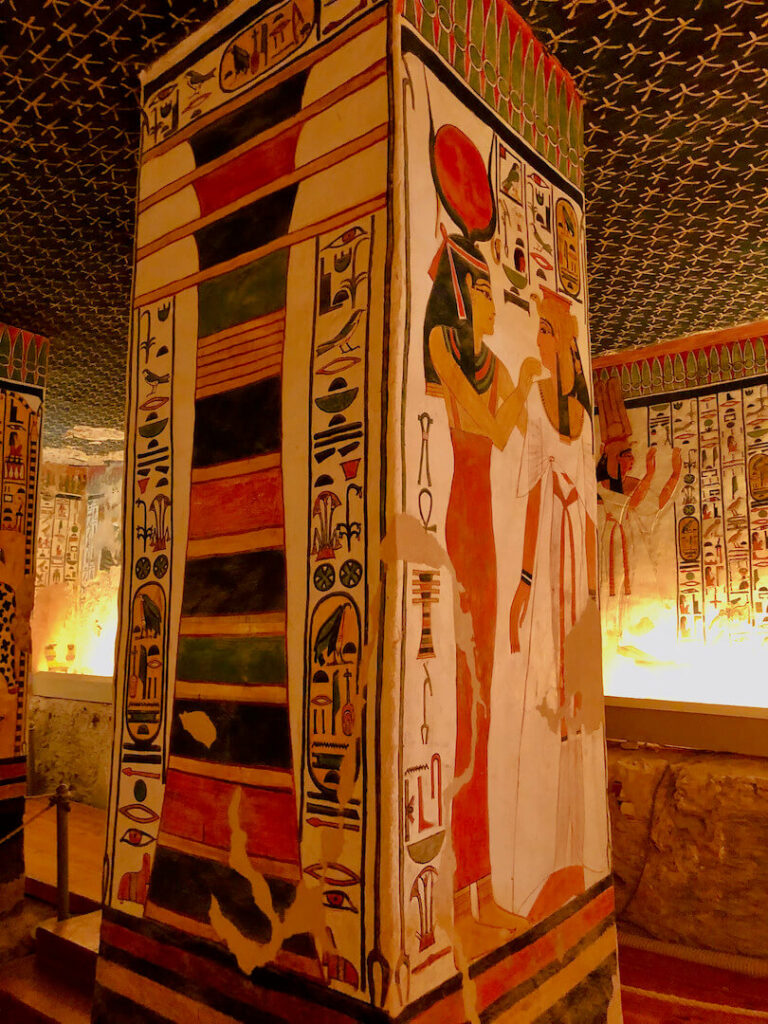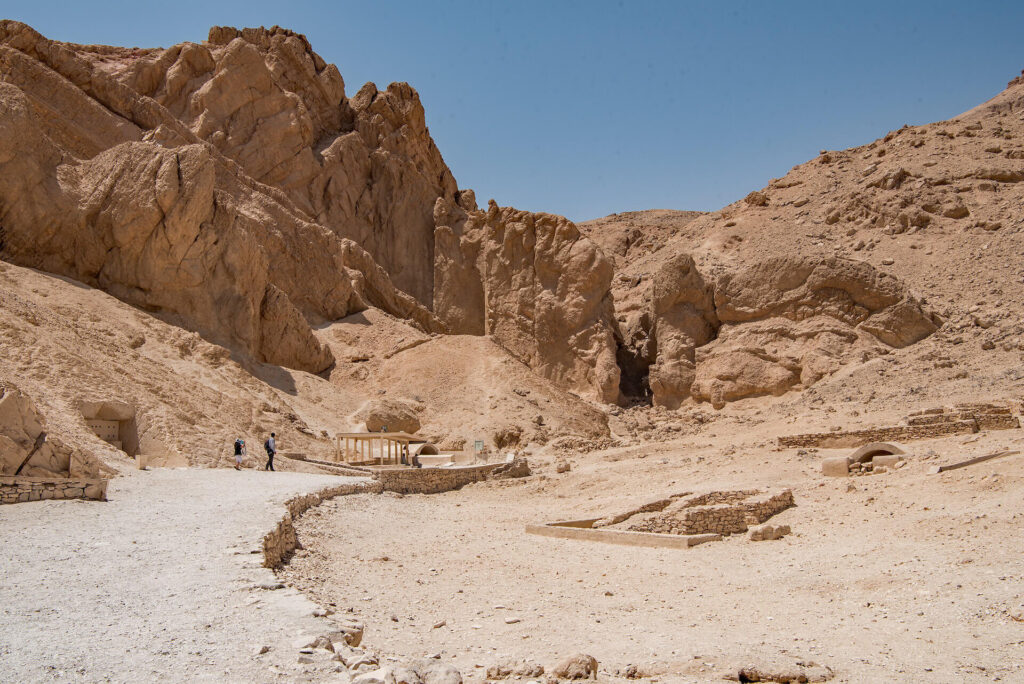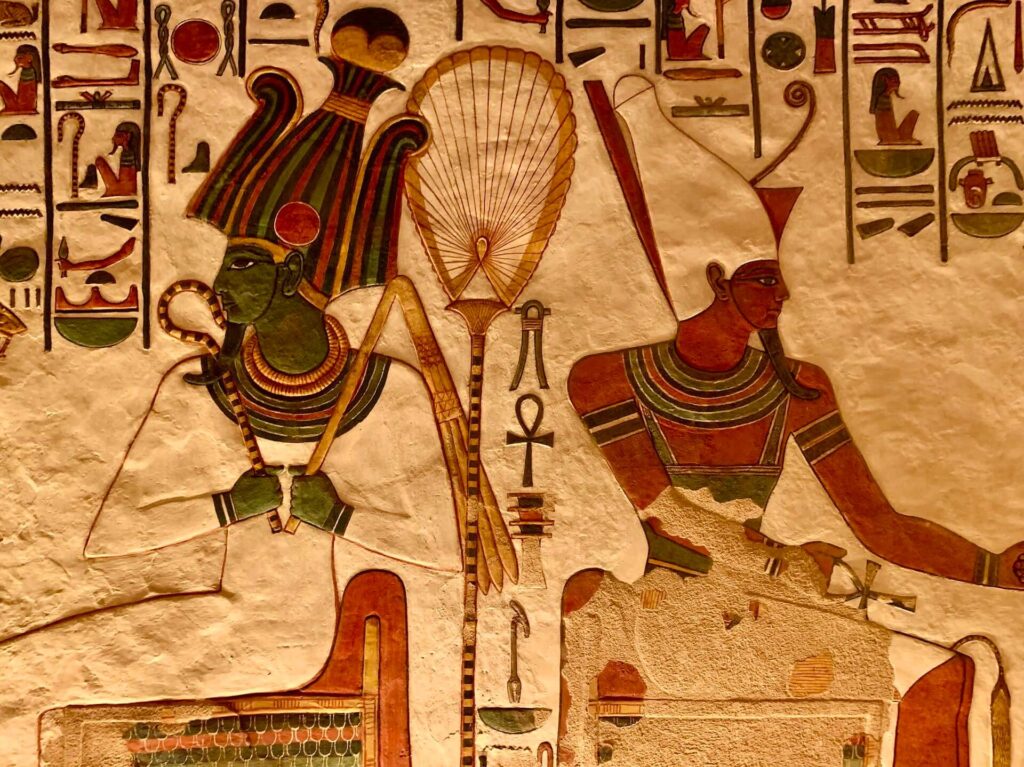The city of Luxor and its surrounding area is a treasure trove of ancient Egyptian temples and tombs. You can find many of these across the water from the city on the river Nile’s west bank. And while the Valley of the Kings may take much of the attention here, no trip is complete without a visit to the Valley of the Queens.
Such is its historical importance and interest, the Valley of the Queens is a key location on many of our multi-day tours in Egypt.
For more information about any of our trips, or to ask us questions prior to booking, please don’t hesitate to contact us.
For now, though, we focus on the Valley of the Queens. Read on to find our complete guide to visiting this fascinating place.

Where is the Valley of the Queens?
Before your visit, let us help you find your bearings. The modern city of Luxor is located in Upper (southern) Egypt some 313 miles (504 kilometres) south of Cairo. It incorporates the site of the ancient city of Thebes, the pharaohs’ capital city between the 16th and 11th centuries BC.
The Luxor we know today surrounds some of the largest ancient monuments that have survived from this time.
In the north of the city, on the east bank of the Nile, you have the Luxor and Karnak temples. The Valley of the Kings and Valley of the Queens are in the desert outside the city, across the river on the west bank.
The Valley of the Queens is to the south of the Valley of the Kings. Visitors can travel between the two in a little over ten minutes by car.
You can learn more about this compelling part of Egypt with our complete guide to visiting Luxor.
What is the Valley of the Queens?
Put simply, the Valley of the Queens is an ancient burial site for the wives of pharaohs, as well as princesses, princes, and other members of the nobility. The main wadi (valley) is home to 91 tombs.
During its period of use, it was referred to as Ta-Set-Neferu, which translates into English as “the place of beauty.”
In addition to the main wadi, the Valley of the Queens also contains:
- The Valley of Prince Ahmose
- The Valley of the Dolmen
- The Valley of the Rope
- The Valley of the Three Pits
These subsidiary valleys contribute another 19 tombs. The burials in them date back to the 18th Dynasty.
A sacred grotto, dedicated to the ancient Egyptian goddess Hathor, stands at the entrance to the Valley of Queens. This is assumed to have an association with rejuvenating the dead.

Who is Buried in the Valley of the Queens?
Given the number of (mostly) women buried in the Valley of the Queens, we can’t cover them all here. However, some of the most famous names include:
- Queen Nefertari
- Queen Sitre
- Queen Iset Ta-Hemdjert
- Princess Ahmose
- Princess-Queen Tyti
- Princess Merytre
- Hebiri (head of the stables)
- Henut and Ti (King Amenhotep’s wife and daughter, respectively)
- Nebettawy and Meritamun (two of Ramses II’s daughters)
- Amen-her-Khepshef and Khaemwaset (Sons of Ramses III)
The ancient Egyptians built tombs at the Valley of the Queens during the New Kingdom era (1570 BC to 1070 BC). It served as an active burial site during the 18th, 19th, and 20th dynasties. The first tomb thought to have been built here is that of Princess Ahmose who died in approximately 1550 BC.
The tomb of Nefertari, Ramses II’s beloved and favourite wife, is the most famous attraction in the Valley of the Queens. It is said to be one of the most beautiful tombs in all of Egypt.
When created, the tomb had 5,200 square feet of paintings covering the walls and columns. Two-thirds of this artwork still remains.
The paintings have particular detail in the depictions of Nefertari’s face, emphasising her beauty. Some of the scenes have lines of blue, red, green, and yellow, portraying directions for navigating to paradise through the afterlife.
The tomb of Amun-her-khepeshef is also highly popular. Unlike Nerfertari’s tomb, which requires an additional cost to view, Amun-her-khepeshef’s burial site is included in the entry ticket.
This tomb was built for the first-born son of Ramses III and Queen Nefertari in the 20th Dynasty. Wall paintings with lively, bright colours decorate the prince’s tomb. These depictions show the young prince alone, with his father, and in the presence of numerous gods.
The uninscribed, anthropomorphic sarcophagus still lays in an undecorated burial chamber.

How to Visit the Valley of the Queens?
As a major tourist attraction, the Valley of the Queens is easily accessible for everyone from solo adventurers to large family groups.
How you visit will depend on what you want to take away from your trip.
If you’re not so interested in the history and cultural importance, but simply want to soak in the ambience and take some photos, you can hop on a ferry across the Nile and take a taxi to the entrance.
However, our various tour packages in Egypt offer a complete experience. Everyone at Mr & Mrs Egypt has a genuine passion for our country’s history, beauty, and culture.
Touring the Valley of the Queens with us not only lets you travel back to ancient times, but also simplifies your visit. There is a flat entry fee to the Valley of the Queens, but extra fees apply to visit certain tombs, including Nefertari.
If you don’t buy the right tickets at the entrance, you can find yourself wasting time travelling back and forth on the tram!

Discover the Valley of the Queens and Much More with Our Tour Packages
Are you ready to discover the magic and majesty of the Valley of the Queens? Dive beneath the surface-level experience with one of our guided tours.
At Mr & Mrs Egypt, all our multi-day tours that stop in Luxor include a trip to the Valley of the Queens, the Valley of the Kings, and the most popular sights in the city itself.
And if these carefully curated excursions aren’t quite what you’re looking for, we also offer luxury custom Egypt tours. With this option, we get to know you better and listen to all your wants and needs.
With over 30 years of experience in planning luxury tours in Egypt, we can find the perfect fit for you!
To take the first step toward your dream adventure through Egypt, please get in touch.